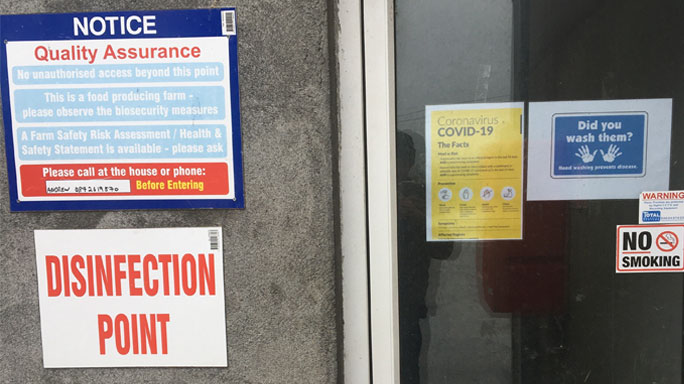Biosecurity plans help to correct gaps in disease prevention

On-farm biosecurity failures can lead to more disease, animal welfare concerns, increased mortality and lower productivity, all leading to a decrease in profitability
Having a biosecurity plan can help protect your farm from external pathogens and can minimize the transmission of diseases in your herd.
Our aim is not to supply you with a one-size-fits-all template for a biosecurity plan for your farm, nor is it to compile a detailed list of all the items needed for such a plan (for that information visit: https://animalhealthireland.ie/programmes/biosecurity/), but to list 7 key steps around which the plan should be built.
1. Determine your goal
Before you can develop your plan, it is important to determine your end goal. Ask yourself 2 questions:
- Is there a specific disease already in the herd that you are looking to target?
- Is there a particular disease you are worried about acquiring?
It is okay if you don’t know the answer to these questions, reach out to your veterinarian as this is a great place to start.
2. Include your veterinarian
Early on in the process of formulating your biosecurity plan, be sure to include the vet in the discussion. Not only will they have a good understanding of the current disease status of the herd, they are also very well placed to comment on your entire system, how everything works together, and know which diseases to focus on
3. Formulate the plan
Write down your biosecurity end goal and be as specific as possible. Now create the steps that will be required to achieve this goal. No matter how simple a protocol may be, you still need to have it in writing. Creating visible materials, using symbols, arrows and checklists, can serve as a reminder to you and make clear to everyone visiting the farm, what biosecurity procedures are in place.
4. Get everyone on board
Biosecurity only works if everyone follows the protocols and the entire plan can derail if one person decides to ignore procedures or make shortcuts. Make sure everyone who enters the farm, be it routinely or once-off, understands what to do and make sure everyone understands why it is important.
5. Start the plan
Once the plan is put in action take note of feedback from regular visitors or farm staff. It is only after biosecurity protocols are rolled out that they can identify problem areas that need to be resolved.
6. Fine tune
Based on feedback and discussion with your veterinarian on what works and what doesn’t work the plan can be reviewed and fine-tuned to suit the day-to-day operation of the farm better.
7. Evaluate and make adjustments
After the plan is put in action it is important to keep monitoring the disease situation on-farm to help measure whether the biosecurity plan is working or not. Once the plan has been given enough time to work, you can decide to make adjustments where necessary. In general, changes in biosecurity protocols do not require large investments, so they are an improvement every herd could trial and evaluate.
Putting biosecurity protocols in place can help reduce the risk of disease being transferred to not only livestock, but to humans as well.
First Published: 6 September 2021
Tagged with: Dairy
